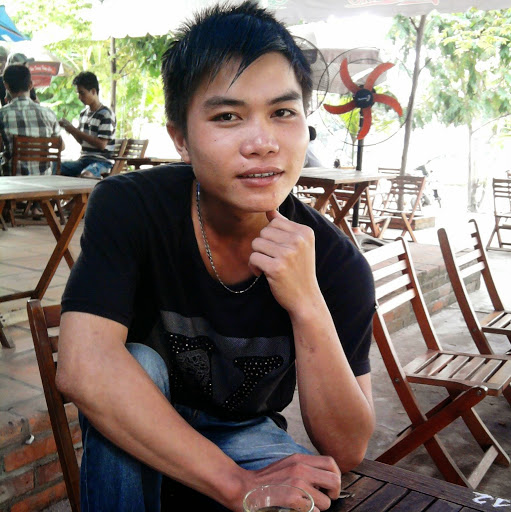Trong N Nguyen
age ~50
from Fort Worth, TX
- Also known as:
-
- Tran N Nguyen
- Toan Nguyen
- Tracy N Quan
Trong Nguyen Phones & Addresses
- Fort Worth, TX
- Arlington, TX
- Bryan, TX
- Ambler, PA
- Houston, TX
- Pasadena, TX
License Records
Trong D. Nguyen
License #:
PST.018326 - Expired
Issued Date:
Nov 14, 2007
Expiration Date:
Dec 31, 2011
Type:
Pharmacist
Trong V Nguyen
License #:
1208002579 - Active
Category:
Nail Salon License
Issued Date:
Aug 11, 2009
Expiration Date:
Aug 31, 2017
Type:
Nail Salon
Trong D Nguyen
Address:
8404 S Crse Dr APT 812, Houston, TX 77072
Phone:
(713)8945502
License #:
370289 - Active
Category:
Apprentice Electrician
Expiration Date:
Jun 9, 2017
Trong Minh Nguyen
Address:
9319 Triola Ln, Houston, TX 77036
Phone:
(281)7092614
License #:
1184071 - Active
Category:
Cosmetology Manicurist
Expiration Date:
Jun 11, 2017
Trong Duc Nguyen
Address:
6216 Pennsylvania Ave, Arlington, TX 76017
Phone:
(817)2690514
License #:
1188099 - Active
Category:
Cosmetology Manicurist
Expiration Date:
Feb 28, 2018
Trong Thi Nguyen
Address:
12810 Porter Mdw Ln, Houston, TX 77014
Phone:
(832)2283731
License #:
1265204 - Active
Category:
Cosmetology Manicurist
Expiration Date:
Oct 23, 2017
Trong Thinh Nguyen
Address:
11110 Triola Ln, Houston, TX 77072
Phone:
(832)9732733
License #:
1347615 - Active
Category:
Cosmetology Manicurist
Expiration Date:
Feb 19, 2018
Trong Van Nguyen
Address:
2109 Chalice Rd, Arlington, TX 76014
Phone:
(479)6518875
License #:
1410725 - Active
Category:
Cosmetology Manicurist
Expiration Date:
Sep 25, 2018
Medicine Doctors

Dr. Trong D Nguyen, Houston TX - DDS (Doctor of Dental Surgery)
view sourceSpecialties:
Dentistry
Address:
932 E Tidwell Rd, Houston, TX 77022
(713)6910555 (Phone), (713)6910921 (Fax)
(713)6910555 (Phone), (713)6910921 (Fax)
Languages:
English

Trong Van Nguyen
view sourceSpecialties:
General Practice
Education:
University Of Medicine Of Ho Chi Minh City (1970)

Trong Phuoc Nguyen
view sourceSpecialties:
Family Medicine
General Practice
General Practice
Education:
Faculty Mixte De Med Et De Pharm Univ De Saigon (1968)

Trong Duc Nguyen, Houston TX
view sourceSpecialties:
Dentist
Address:
932 E Tidwell Rd, Houston, TX 77022
Name / Title
Company / Classification
Phones & Addresses
Principle
Trong Thang Nguyen
Police Protection
Police Protection
6526 Redding Rd., Houston, TX 77036
Owner
The Nail Shop
Ret Misc Merchandise
Ret Misc Merchandise
3040 Fm 1960 E, Houston, TX 77073
Director
VIETNAMESE BAPTIST THEOLOGICAL SCHOOL
7316 Frankford Rd, Dallas, TX 75252
Director
HTDN ENTERPRISES, LLC
Business Services
Business Services
11203 Jones Rd, Houston, TX 77070
1803 Stillview Dr, Houston, TX 77068
1803 Stillview Dr, Houston, TX 77068
Director, President
TN & D MACHINE INC
6040 Brittmoore Rd STE H, Houston, TX 77041
9311 Summerbell Ln, Houston, TX 77074
16966 Nevisway St, Houston, TX 77041
9311 Summerbell Ln, Houston, TX 77074
16966 Nevisway St, Houston, TX 77041
Principal
Tn and D Machine Houston
Repair Services
Repair Services
6040 Brittmoore Rd, Houston, TX 77041
Principal
La Colinas Nail Studio LLC
Beauty Shop
Beauty Shop
417 Mustang Dr, Irving, TX 75063
Treasurer
VIETNAMESE NATIONAL BAPTIST FELLOWSHIP
6325 Branchwood Trl, The Colony, TX 75056
616 Balleywood Rd, Irving, TX 75060
616 Balleywood Rd, Irving, TX 75060
Us Patents
-
Three State Phase Detector
view source -
US Patent:59173564, Jun 29, 1999
-
Filed:Sep 11, 1995
-
Appl. No.:8/526395
-
Inventors:Humberto Felipe Casal - Austin TX
Hehching Harry Li - Austin TX
Trong Duc Nguyen - Webster TX -
Assignee:International Business Machines Corp. - Armonk NY
-
International Classification:H03K 300
-
US Classification:327236
-
Abstract:A phase detector circuit receives both a reference clock signal and a sense clock signal and produces a synchronization signal if the sense and reference clock signals are in phase within a specified tolerance. A lead/lag signal is provided to a skew control circuit and accompanying delay circuits to increase or decrease the amount of delay on the reference clock signal and the sense clock signal if the two signals are not in phase within the specified tolerance. The sense clock signal is a feedback signal returned from logic circuitry, which originally receives the reference clock signal, which may be supplied by a master clock signal within a processor.
-
Symmetric Clock System For A Data Processing System Including Dynamically Switchable Frequency Divider
view source -
US Patent:55240356, Jun 4, 1996
-
Filed:Aug 10, 1995
-
Appl. No.:8/513245
-
Inventors:Humberto F. Casal - Austin TX
Rafey Mahmud - Austin TX
Trong Nguyen - Houston TX
Mark L. Shulman - Staatsburg NY
Nandor G. Thoma - Plano TX -
Assignee:International Business Machines Corporation - Armonk NY
-
International Classification:H03K 2100
-
US Classification:377 47
-
Abstract:A dynamically switchable clock system having a symmetrical output signal includes a frequency doubler which couples the input frequency to provide greater resolution and synchronization of an output signal to an input signal in the frequency divider and the facility to handle odd divides as even divides at double frequency, a counter controlled by a divisor select signal, first and second compare circuits which compare against the preprogrammed count for division, the compare circuits receiving an input from the divisor select circuits, and having outputs to a counter reset line and to an output clock S/R latch which provides the frequency divided symmetrical output signal.
-
Hierarchical Clocking System Using Adaptive Feedback
view source -
US Patent:56191588, Apr 8, 1997
-
Filed:Aug 18, 1995
-
Appl. No.:8/516704
-
Inventors:Humberto F. Casal - Austin TX
Joel R. Davidson - Austin TX
Hehching H. Li - Austin TX
Yuan C. Lo - Austin TX
Trong D. Nguyen - Webster TX
Campbell H. Snyder - Austin TX
Nandor G. Thoma - Plano TX -
Assignee:International Business Machines Corp. - Armonk NY
-
International Classification:H03K 513
-
US Classification:327292
-
Abstract:A clocking system for complex electronic devices is created in an hierarchial manner whereby the master clock pulse is provided to a plurality of digital pulse aligners which in turn provide phase aligned clock signals at the field replaceable unit level to either a slave clock or a digital phase aligner. The slave clock or the digital phase aligner at the field replaceable unit level in turn provides an aligned clock pulse to a timing node on respective chips. A third level of the hierarchy provides similarly aligned pulses to individual using-circuits on the chips of the system. The digital phase aligner, aligning the output pulse at the timing node of the next level with the reference pulses being provided to the digital phase aligner at each level, insures that the timing pulses arriving at the utilizing circuits are synchronously aligned with clock pulses of the master clock. The system provides dramatic simplification of replacement of either field replaceable units or individual components within field replaceable units. The system is self-phasing and self-correcting to accommodate timing misalignments caused by any variations in the timing delays at all levels, thereby reducing the jitter that must be accommodated.
-
Controlling Power Up Using Clock Gating
view source -
US Patent:58225960, Oct 13, 1998
-
Filed:Nov 6, 1995
-
Appl. No.:8/554206
-
Inventors:Humberto Felipe Casal - Austin TX
Hehching Harry Li - Austin TX
Trong Duc Nguyen - Webster TX
Nandor Gyorgy Thoma - Plano TX -
Assignee:International Business Machines Corporation - Armonk NY
-
International Classification:H03K 2100
G06F 1300 -
US Classification:39575004
-
Abstract:During power up and power down of logic circuitry implemented in CMOS, the clock signal supplied to the logic circuitry is incremented and decremented, respectively, to avoid a sudden application or removal of the clock signal to the logic circuitry.
-
Determining Candidate Object Identities During Image Tracking
view source -
US Patent:20210224544, Jul 22, 2021
-
Filed:Apr 9, 2021
-
Appl. No.:17/226405
-
Inventors:- Irving TX, US
Sailesh Bharathwaaj Krishnamurthy - Irving TX, US
Trong Nghia Nguyen - Dallas TX, US -
International Classification:G06K 9/00
G06T 7/292
H04N 7/18
G06T 7/246 -
Abstract:A system includes sensors and a tracking subsystem. The subsystem receives frames of top-view images generated by the sensors. The subsystem tracks a first and second object, based on received frames. The subsystem detects that the first object is within a threshold distance of the second object. In response, the subsystem determines a probability that the first object switched identifiers with the second object and updates candidate lists accordingly for the first and second objects. The updated first candidate list includes a probability that the first object is associated with a first identifier and a probability that the first object is associated with a second identifier.
-
Feedback And Training For A Machine Learning Algorithm Configured To Determine Customer Purchases During A Shopping Session At A Physical Store
view source -
US Patent:20210124921, Apr 29, 2021
-
Filed:Jul 24, 2020
-
Appl. No.:16/938676
-
Inventors:- Irving TX, US
Sailesh Bharathwaaj Krishnamurthy - Irving TX, US
Trong Nghia Nguyen - Dallas TX, US
Sarath Vakacharla - Irving TX, US -
International Classification:G06K 9/00
G06Q 30/06
G06N 20/00 -
Abstract:An apparatus includes a processor. The processor receives an algorithmic shopping cart that includes a first set of items determined by an algorithm to have been selected by a person during a shopping session in a physical store, based on a set of inputs received from sensors located within the physical store. The processor also receives a virtual shopping cart that includes a second set of items. Video of the shopping session was captured by a set of cameras located in the physical store and depicts the person selecting the second set of items. The processor compares the algorithmic cart to the virtual cart and determines that a discrepancy exists between the algorithmic cart and the virtual cart. The processor determines a subset of the set of inputs associated with the discrepancy and attaches metadata explaining the discrepancy to the subset. The processor uses the subset to train the algorithm.
-
Determining Candidate Object Identities During Image Tracking
view source -
US Patent:20210124927, Apr 29, 2021
-
Filed:Oct 25, 2019
-
Appl. No.:16/664363
-
Inventors:- Irving TX, US
Sailesh Bharathwaaj Krishnamurthy - Irving TX, US
Trong Nghia Nguyen - Dallas TX, US -
International Classification:G06K 9/00
H04N 7/18
G06T 7/292
G06T 7/246 -
Abstract:A system includes sensors and a tracking subsystem. The subsystem receives frames of top-view images generated by the sensors. The subsystem tracks a first, second, and third object, based on received frames. The subsystem detects that the first object is within a threshold distance of the second object. In response, the subsystem determines a probability that the first object switched identifiers with the second object and updates candidate lists accordingly for the first and second objects. The updated first candidate list includes a probability that the first object is associated with a first identifier and a probability that the first object is associated with a second identifier. The updated second candidate list includes a probability that the second object is associated with the first identifier and a probability that the second object is associated with the second identifier.
-
Tracking Positions Using A Scalable Position Tracking System
view source -
US Patent:20210124938, Apr 29, 2021
-
Filed:Jul 29, 2020
-
Appl. No.:16/941787
-
Inventors:- Irving TX, US
Sarath Vakacharla - Irving TX, US
Trong Nghia Nguyen - Dallas TX, US
Shahmeer Ali Miza - Celina TX, US
Madan Mohan Chinnam - Irving TX, US
Caleb Austin Boulio - Lewisville TX, US -
International Classification:G06K 9/00
H04N 5/376
G01S 17/06
H04N 5/247 -
Abstract:A scalable tracking system processes video of a space to track the positions of people within a space. The tracking system determines local coordinates for the people within frames of the video and then assigns these coordinates to time windows based on when the frames were received. The tracking system then combines or clusters certain local coordinates that have been assigned to the same time window to determine a combined coordinate for a person during that time window.
Vehicle Records
-
Trong Nguyen
view source -
Address:7520 Arbor Park Dr, Fort Worth, TX 76120
-
Phone:(817)2965518
-
VIN:WDDHF5GB4BA500980
-
Make:MERCEDES-BENZ
-
Model:E-CLASS
-
Year:2011
-
Trong Nguyen
view source -
Address:1934 Briar Mdw Dr, Arlington, TX 76014
-
VIN:JTEZU11F370008314
-
Make:TOYOTA
-
Model:FJ CRUISER
-
Year:2007
Youtube
Plaxo

Nguyen Trong
view sourceVung Tau, VietnamThe Credent Technology I want to make friend with you all

trong nguyen
view sourcesr. chemist at depomed

Trong Nguyen
view sourceMember at LampCentral Inc
Flickr

Trong Nguyen Nguyen
view source
Trong Steven Nguyen
view source
Trong Nghia Nguyen
view source
Trong Nghia Nguyen
view source
Trong Nguyen Nguyen
view source
Trong Nghia Nguyen
view sourceGoogleplus

Trong Nguyen
Work:
George Mason University - Undergraduate Teaching Assistant (2010-2012)
RadioShack - Sales Associate (2010-2010)
WiGoClinic - Repair Technician (2012-2013)
RadioShack - Sales Associate (2010-2010)
WiGoClinic - Repair Technician (2012-2013)
Education:
George Mason University - Computer Science
Tagline:
It's time to blow this scene...
Bragging Rights:
Awesome at cable management

Trong Nguyen
Work:
Truong hoc
Education:
Truong duong van an
About:
Que o quang binh ,
Tagline:
Song va lam viec theo nguyen tac
Bragging Rights:
Dang hoc dai hoc

Trong Nguyen
Work:
Vms center 6 - Kĩ thuật viên (5)
Education:
NIT Trichy - Engineer network
Relationship:
Single

Trong Nguyen
Work:
Ngân hàng - Chuyên viên
Education:
Đại học ngân hàng TPHCM - Tài chính ngân hàng

Trong Nguyen
Education:
McMaster University - Chemical Engineering

Trong Nguyen
Lived:
Houston, TX
Education:
San Jacinto College

Trong Nguyen
About:
Là người bình thương nhưng đôi khi cũng không bình thường
Bragging Rights:
đang học lớp 1

Trong Nguyen
Education:
HPU - Building
Tagline:
Thich moi la, nhung khong quen giu gin ban sac cu :))
Classmates

Trong Nguyen
view sourceSchools:
John Sutter Junior High School Canoga Park CA 1975-1976
Community:
Richard Hobbs, David Benavidez, Ginger Boyer, Holly Mckimson

Trong Nguyen
view sourceSchools:
Trident Adult Education Anaheim CA 1996-2000
Community:
Miguel Murga

Trong Nguyen
view sourceSchools:
Brebeuf High School Willowdale Morocco 1987-1991
Community:
Patricia Griffin, Craig Austen, Rebecca Lehmann, Sue Burns

Trong Nguyen
view sourceSchools:
Lincoln Elementary School Enid OK 1979-1983
Community:
Gary Yates, Ron Tharp, Gena Goodson, Mauricia Turner, Rami Williams, Kathleen Woelke, Tammie Waldie, Jerel Smith, Miranda Manor, Brian Henry, Betty Hughey, Adam Harper

Trong Vu Nguyen
view sourceSchools:
Ecole Secondaire Georges-Vanier Montreal Kuwait 1990-1994
Community:
Robert Rolland, Aleksandra Detcheva, Richard Lapierre, Kevin Newman

Trong Nguyen
view sourceSchools:
Indian Hills Elementary School Aloha OR 1986-1992
Community:
Xavier C, Steven Hehr, Kristy Johanson, Brandi Hanley, Bobbiesue Engel

Trong Nguyen, Senn High S...
view sourceGet Report for Trong N Nguyen from Fort Worth, TX, age ~50

![[Eng Sub/Lyrics] Em Trong Mat Toi - Nguyen Duc Cuong [Eng Sub/Lyrics] Em Trong Mat Toi - Nguyen Duc Cuong](https://i.ytimg.com/vi/jX8dY-i2pNo/0.jpg)











